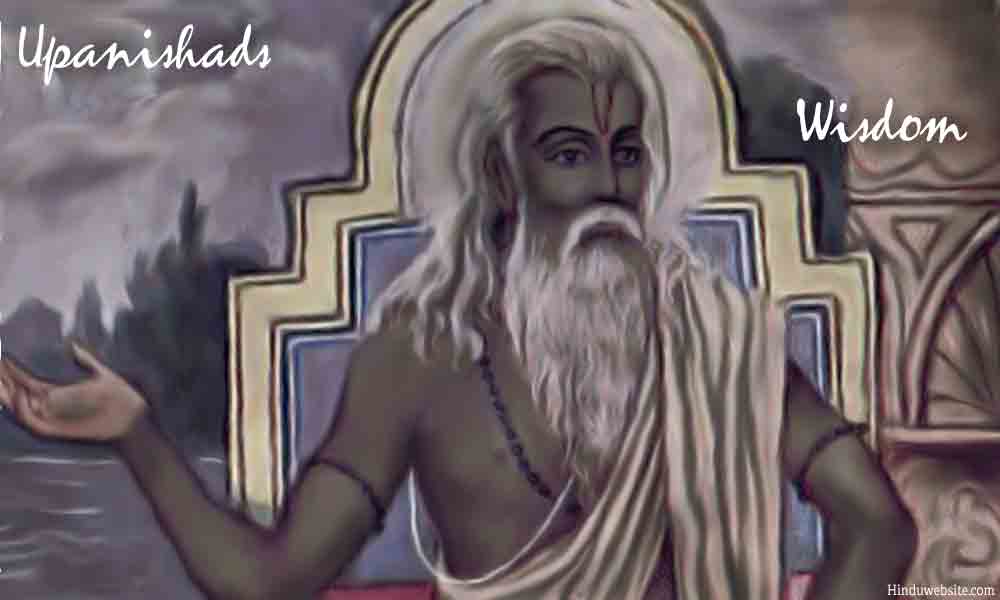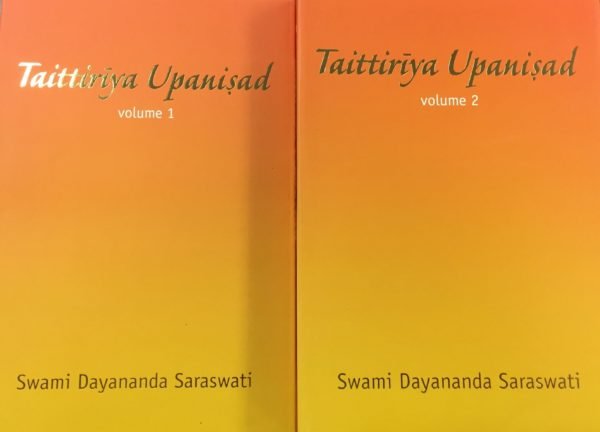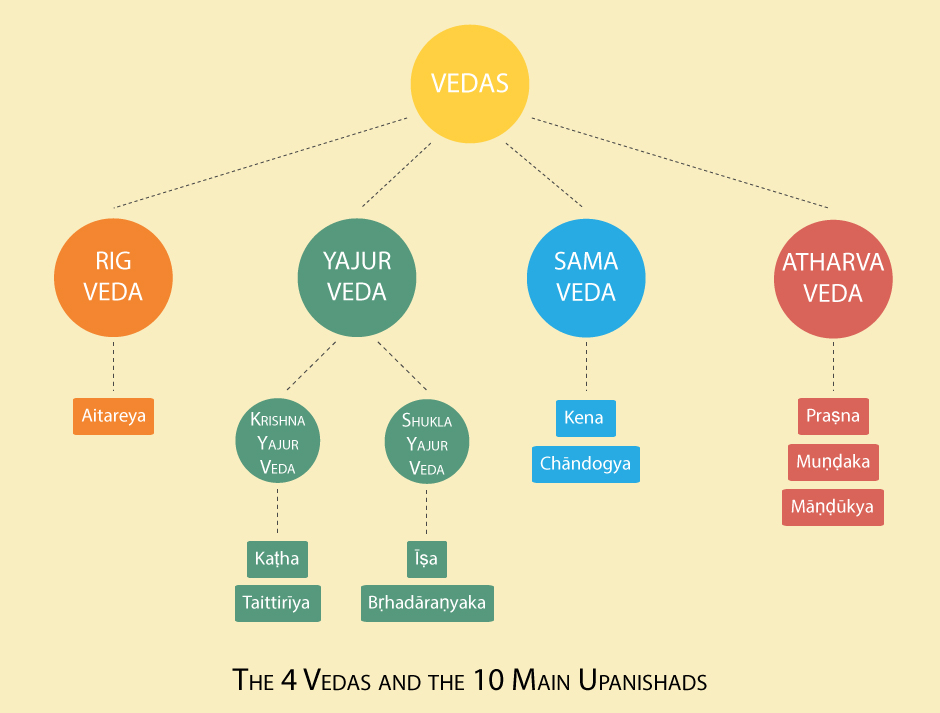

The word in course of time gathered round it the sense of secret teaching or secret doctrine ( Rahasya) which was imparted at such sittings.

This no doubt refers to the pupil’s sitting down near his teacher at the time of instruction. Thus, this word means ‘sitting near by devotedly’. The prefix Upa denotes nearness and Ni totality. The word ‘Upanishad’ has been derived from the root Sad (to sit), to which are added two prefixes: Upa and Ni. The chief reason why the Upanishads are called the ‘end of the Veda’ is that they represent the central aim of the Veda and contain the highest and ultimate goal of the Veda as they deal with Moksha or Supreme Bliss. As Upanishads contain difficult discussions of ultimate philosophical problems, they were taught to the pupils at about the end of their course. Chronologically they came at the end of the Vedic period. Literally, Vedanta means the end of Veda, Vedasya antah, the conclusion ( Anta) as well as the goal ( Anta) of the Vedas. The Upanishads are often called ‘ Vedanta‘. They are at present, the most popular and extensively read Vedic texts. The Upanishads, however, are included in the Shruti.

The Samhita and the Brahmanas represent mainly the Karma-Kanda or the ritual portion, while the Upanishads chiefly represent the Jnana-Kanda or the knowledge portion. The Vedas are generally considered to have two portions viz., Karma-Kanda (portion dealing with action or rituals) and Jnana-Kanda (portion dealing with knowledge). If the Samhita is likened to a tree, the Brahmanas are its flowers and the Aranyakas are its fruit yet not ripened, the Upanishads are the ripe fruits. The Upanishads come towards the end of the Aranyakas. Now, we discuss to the concluding part of the Veda namely ‘the Upanishads. Kerala School of Astronomy and Mathematics.Continuity of oral and textual traditions of the Vedas.


 0 kommentar(er)
0 kommentar(er)
